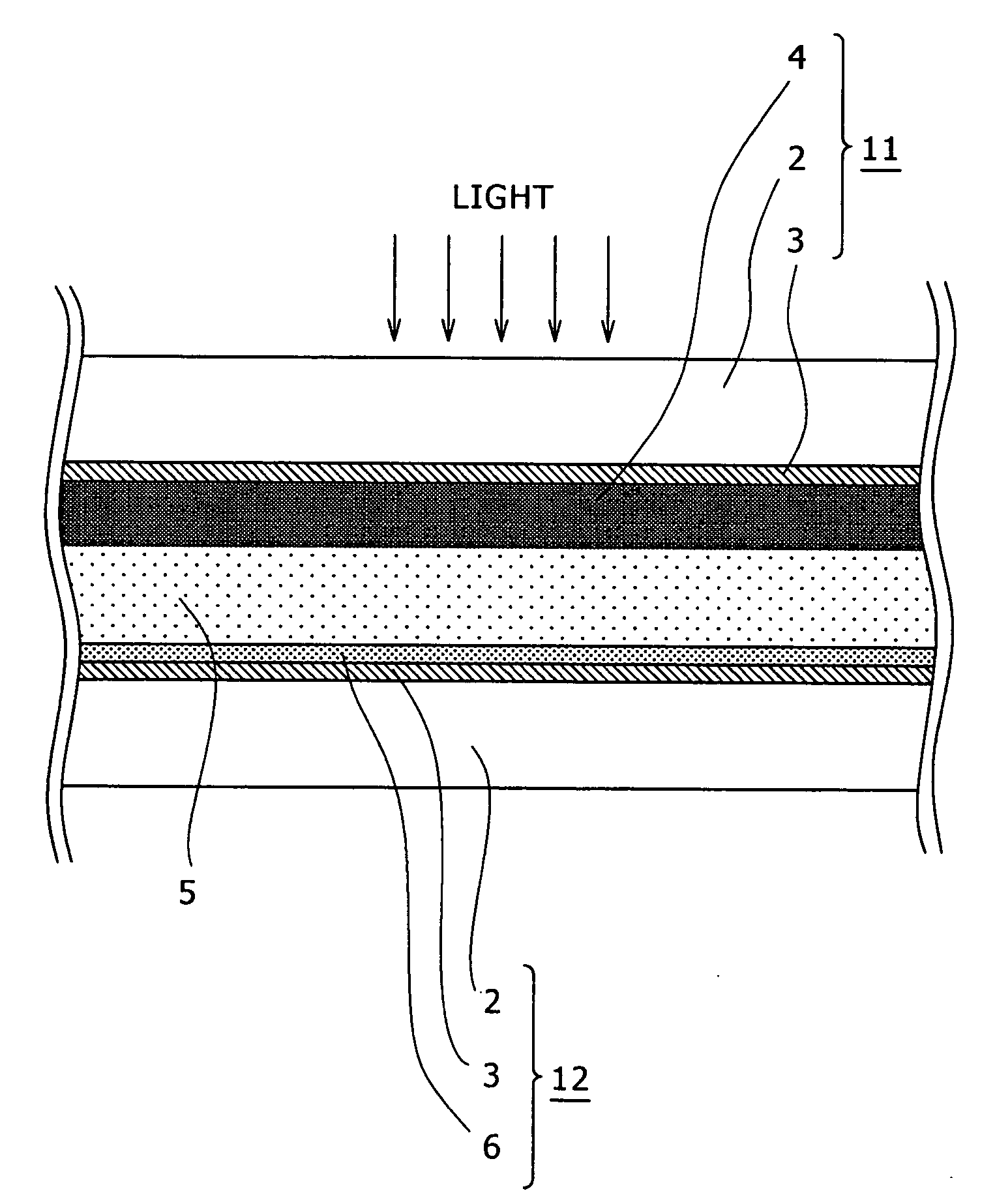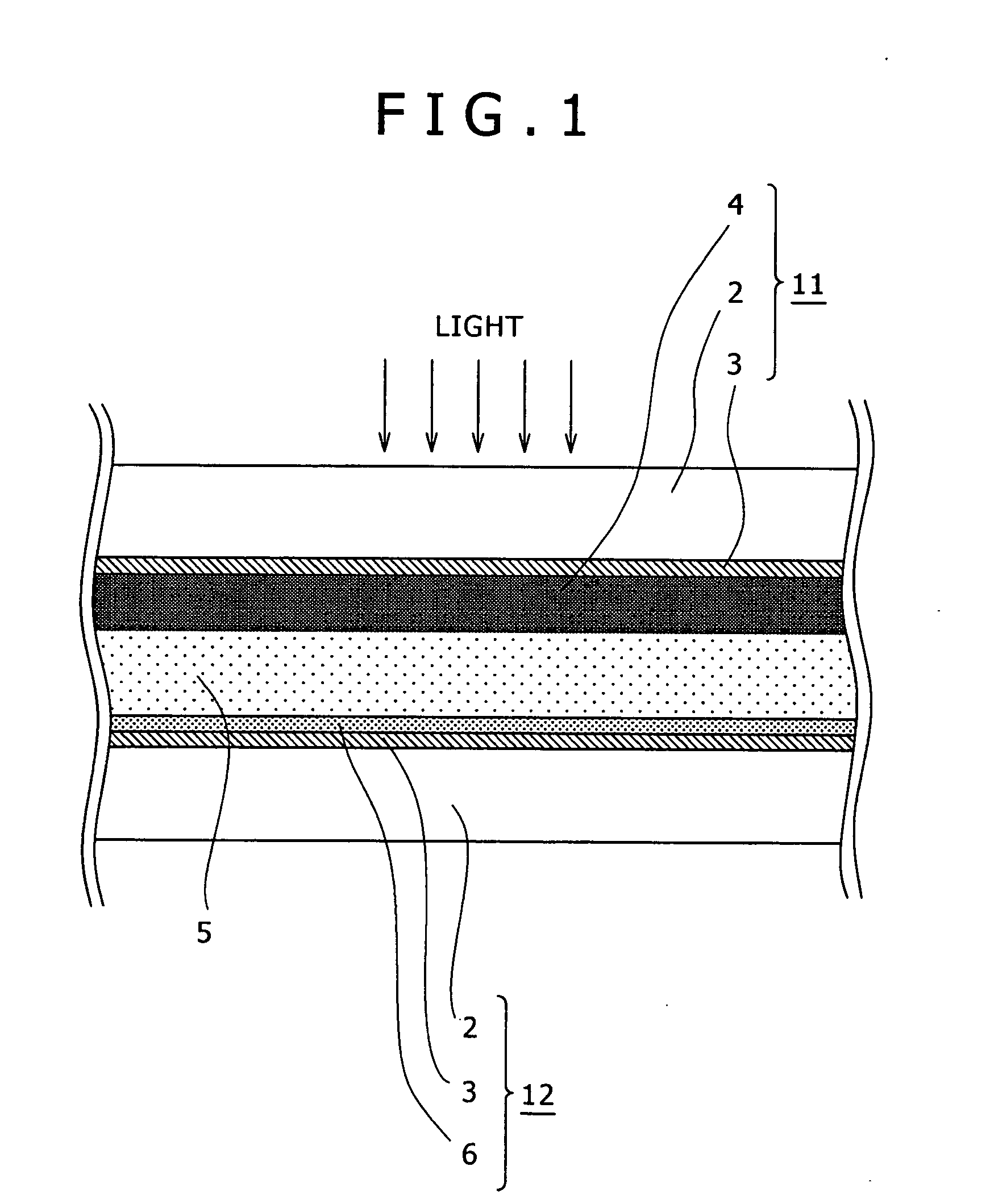Photoelectric Converter and Semiconductor Electrode
a technology of photoelectric converter and semiconductor electrode, which is applied in the direction of electrochemical generator, cell components, electrolytic capacitors, etc., can solve the problems of global and local environmental problems, radiation contamination, and global warming, and achieve the effects of increasing specific surface area, and increasing specific surface area
- Summary
- Abstract
- Description
- Claims
- Application Information
AI Technical Summary
Benefits of technology
Problems solved by technology
Method used
Image
Examples
example 1
[0112]The first step was preparation of TiO2 paste for the layer of semiconductor fine particles 4.
[0113]The TiO2 paste was prepared as follows with reference to “Modern Technology of Dye-sensitized Solar Cells” issued by C.M.C.
[0114]Titanium isopropoxide (125 mL) was slowly added dropwise with stirring to 750 mL of aqueous solution of 0.1 M nitric acid at room temperature. Stirring was continued for 8 hours in a thermostat at 80° C. There was obtained a semiopaque turbid sol solution. After cooling to room temperature, this sol solution was filtered through a glass filter. Thus there was obtained 700 mL of sol solution.
[0115]The sol solution underwent hydrothermal treatment in an autoclave at 220° C. for 12 hours. The treated solution further underwent ultrasonic treatment for 1 hour to ensure dispersion. The resulting solution was concentrated by an evaporator at 40° C., so that the content of TiO2 in the concentrated solution increased to 20 wt %.
[0116]The concentrated sol soluti...
examples 2 and 3
[0128]The same procedure as in Example 1 was repeated to prepare the photoelectric converter except that the aqueous solution shown in Table 1 below was used for hydrothermal treatment of the TiO2 film constituting the layer of semiconductor fine particles.
examples 4 to 6
[0129]The same procedure as in Example 1 was repeated to prepare the photoelectric converter except that hydrothermal treatment was performed on the TiO2 film constituting the layer of semiconductor fine particles under the condition (duration of treatment) shown in Table 1 below.
PUM
| Property | Measurement | Unit |
|---|---|---|
| particle diameter | aaaaa | aaaaa |
| particle diameter | aaaaa | aaaaa |
| particle diameter | aaaaa | aaaaa |
Abstract
Description
Claims
Application Information
 Login to View More
Login to View More - R&D
- Intellectual Property
- Life Sciences
- Materials
- Tech Scout
- Unparalleled Data Quality
- Higher Quality Content
- 60% Fewer Hallucinations
Browse by: Latest US Patents, China's latest patents, Technical Efficacy Thesaurus, Application Domain, Technology Topic, Popular Technical Reports.
© 2025 PatSnap. All rights reserved.Legal|Privacy policy|Modern Slavery Act Transparency Statement|Sitemap|About US| Contact US: help@patsnap.com


